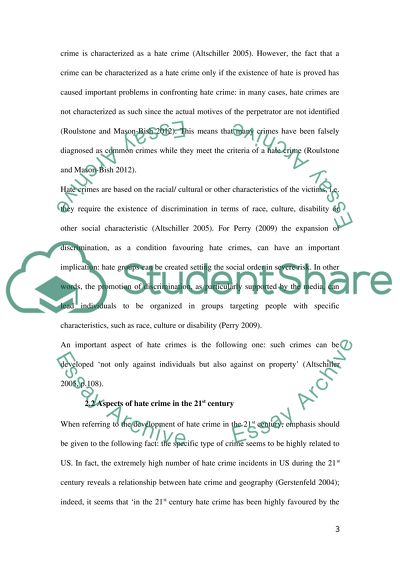Cite this document
(“Critically explore the rise of 'hate crime' in twenty first century Essay”, n.d.)
Critically explore the rise of 'hate crime' in twenty first century Essay. Retrieved from https://studentshare.org/sociology/1492275-critically-explore-the-rise-of-hate-crime-in-twenty-first-century-society
Critically explore the rise of 'hate crime' in twenty first century Essay. Retrieved from https://studentshare.org/sociology/1492275-critically-explore-the-rise-of-hate-crime-in-twenty-first-century-society
(Critically Explore the Rise of 'hate crime' In Twenty First Century Essay)
Critically Explore the Rise of 'hate crime' In Twenty First Century Essay. https://studentshare.org/sociology/1492275-critically-explore-the-rise-of-hate-crime-in-twenty-first-century-society.
Critically Explore the Rise of 'hate crime' In Twenty First Century Essay. https://studentshare.org/sociology/1492275-critically-explore-the-rise-of-hate-crime-in-twenty-first-century-society.
“Critically Explore the Rise of 'hate crime' In Twenty First Century Essay”, n.d. https://studentshare.org/sociology/1492275-critically-explore-the-rise-of-hate-crime-in-twenty-first-century-society.


